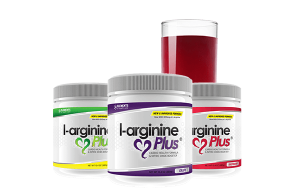Exercise is healthy for your heart, but when it comes to running vs. walking for your blood pressure, which is better? Find out here.
If you’re wondering which is better, walking or running, the simple answer is that neither is necessarily better than the other. However, if you’re looking to reach specific goals (e.g.: burning more calories), then one activity may suit your needs more. The following is an overview of both activities and how they affect your blood pressure and heart health.
Aerobic Exercise Benefits
 Walking and running are aerobic exercises that strengthen your heart and circulation, boost stamina, and more. Moreover, according to one study, aerobic exercise can also help reduce anxiety and depression. To get these benefits, you just have to do 30 minutes of moderate-intensity exercise three times per week.
Walking and running are aerobic exercises that strengthen your heart and circulation, boost stamina, and more. Moreover, according to one study, aerobic exercise can also help reduce anxiety and depression. To get these benefits, you just have to do 30 minutes of moderate-intensity exercise three times per week.
If you’re trying to decide which of these activities to do, you need to figure out what it is you’re trying to accomplish. For instance, if your goal is to lose weight, running will help you get there faster. However, since walking is accessible for most fitness levels, it can be a great option if you’re just getting started.
Walking or Running?
When it comes to walking, your best option for increasing your heart rate is to go speed and power walking. In fact, people who power walk burn a similar number of calories as someone who runs for the same amount of time. You also don’t have to stick to one activity; you can switch between walking, power walking, and running as you see fit.
If you want to keep a regular pace but still work as hard as if you were running, consider incline walking by walking up a hill. You can either choose the incline option on your treadmill or simply find a hilly area nearby. Those who are new to incline walking can start gradually and work up from 5% to a 15% incline.
Benefits and Blood Pressure
While both types of aerobic exercises are beneficial, it’s important to note that running is a high-impact exercise. In other words, it can be harder on your body. Also, if you’re trying to lower your blood pressure, you may not have to choose between walking and running.
According to a 2013 study available in Arteriosclerosis, Thrombosis, and Vascular Biology, both activities provide similar results:
- Equivalent energy expenditures by moderate (walking) and vigorous (running) exercise produced similar risk reductions for hypertension, hypercholesterolemia, diabetes mellitus, and possibly CHD.
The Outlook
 Whether you’re walking or running, what’s important is that you’re getting at least 150 minutes of moderate-intensity exercise per week. If you don’t have much time, you can also do 75 minutes of high-intensity exercise per week.
Whether you’re walking or running, what’s important is that you’re getting at least 150 minutes of moderate-intensity exercise per week. If you don’t have much time, you can also do 75 minutes of high-intensity exercise per week.
In addition to working out, you can give your heart an extra boost by taking supplements like L-arginine Plus. Its ingredients are effective at promoting circulation, blood pressure, cholesterol, and more. If you’re ready to give your heart the support it deserves, then start walking or running and take L-arginine Plus.

